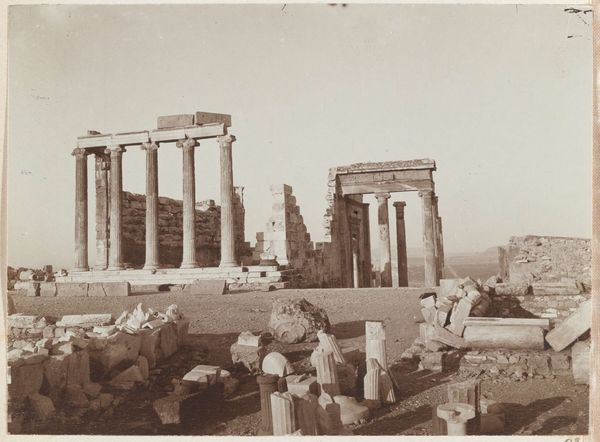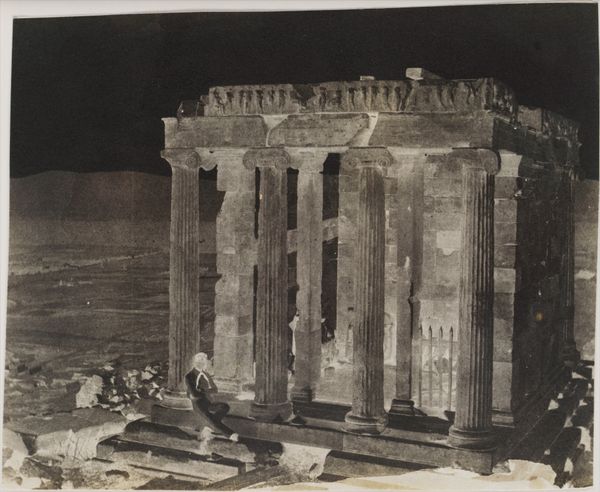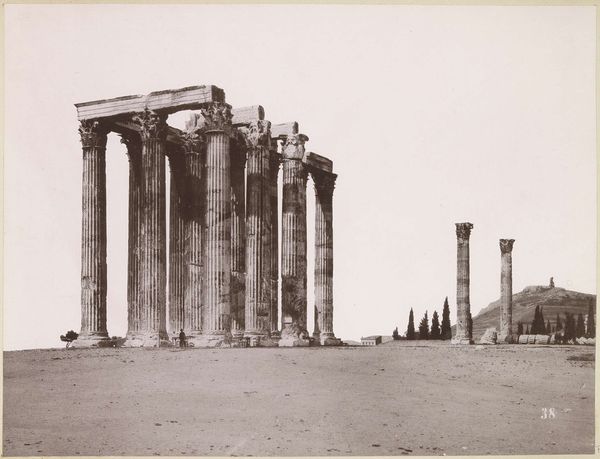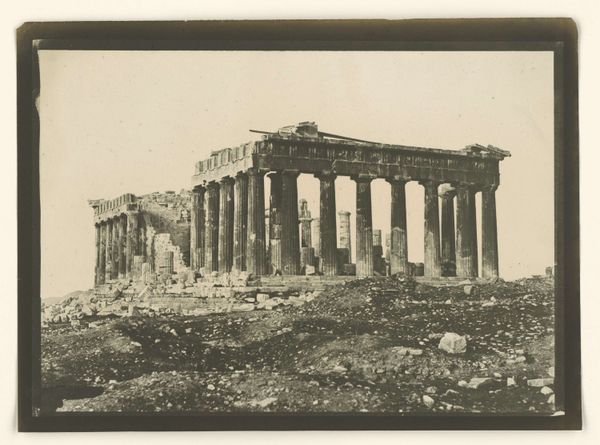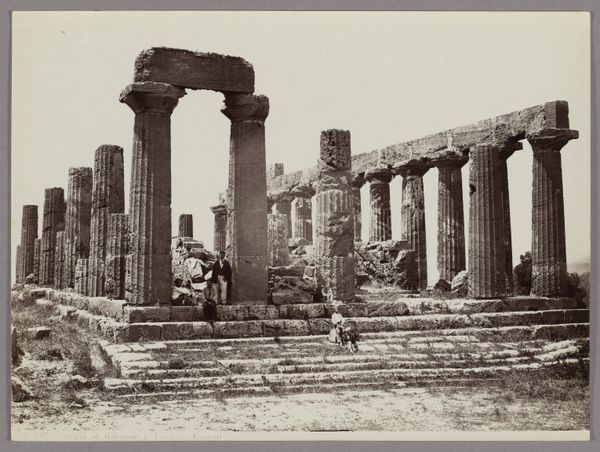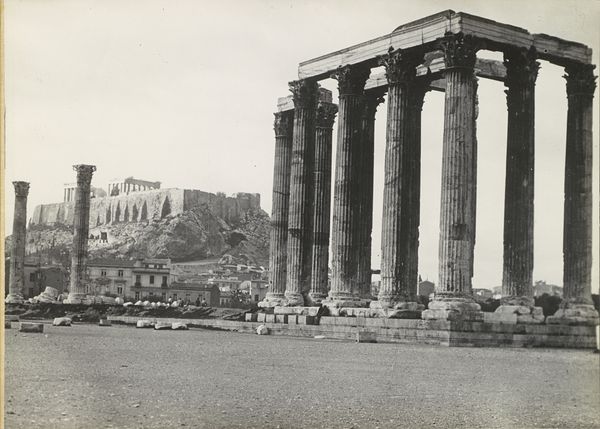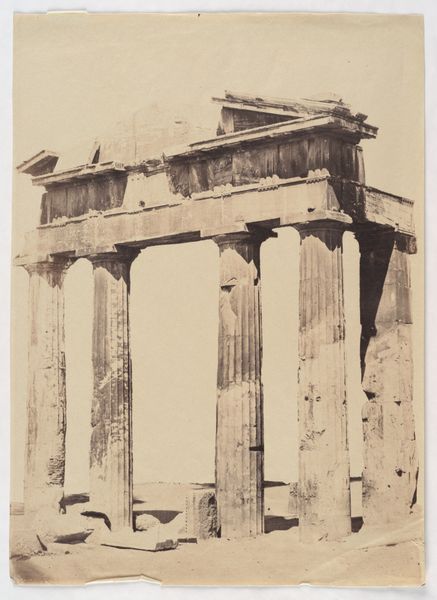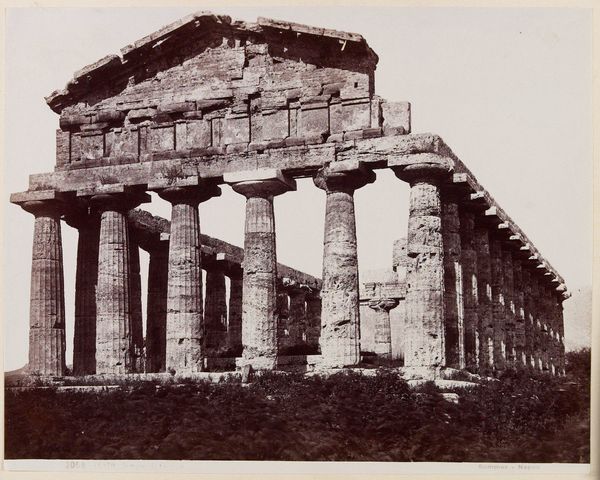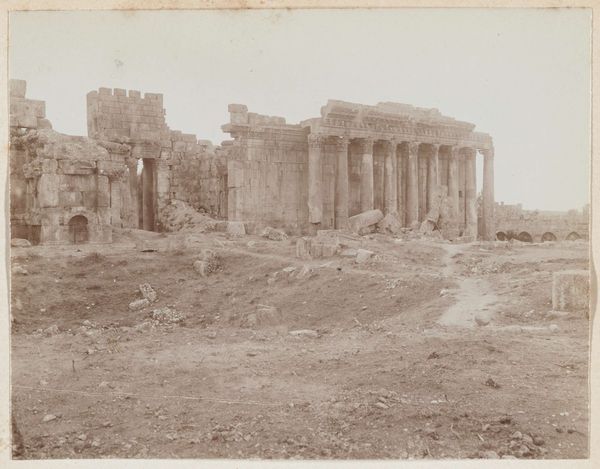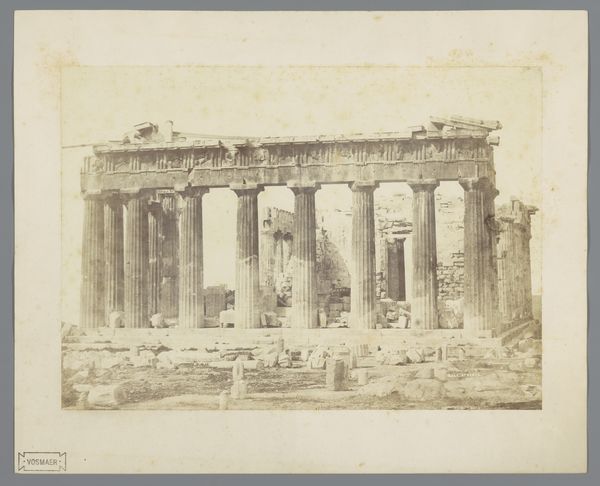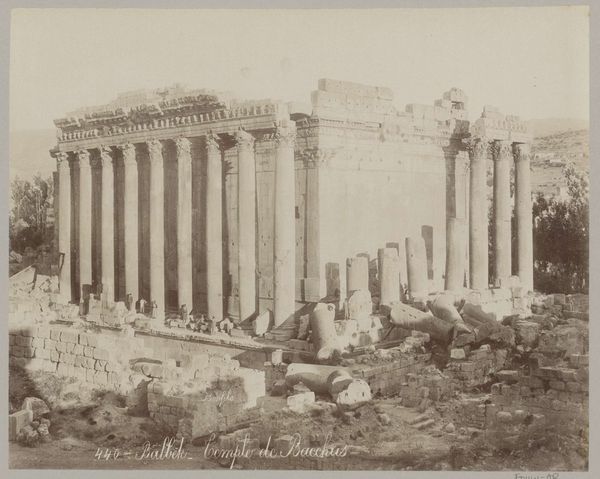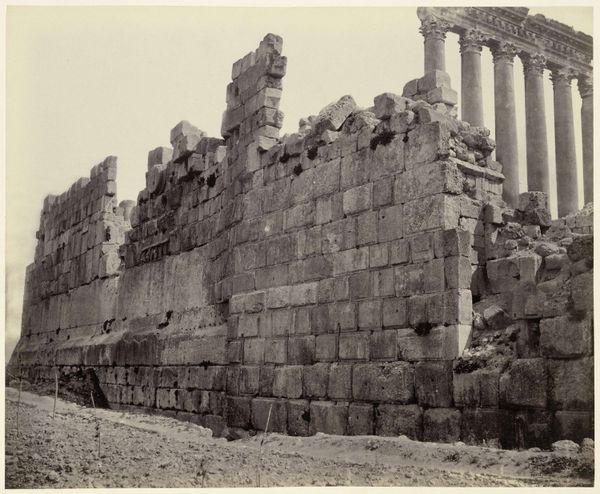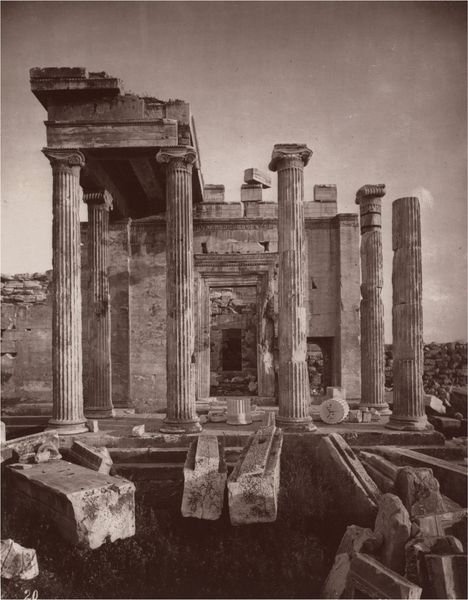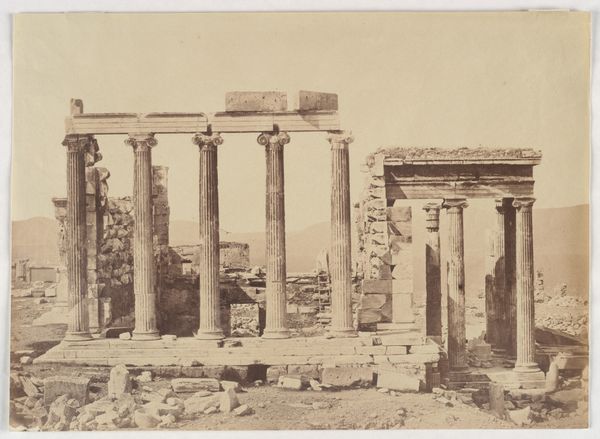
print, paper, photography, gelatin-silver-print, architecture
#
16_19th-century
# print
#
sculpture
#
greek-and-roman-art
#
landscape
#
paper
#
photography
#
ancient-mediterranean
#
gelatin-silver-print
#
architecture
#
statue
Copyright: Public Domain
Curator: Let’s turn our attention to this striking image captured circa 1875 by Adolphe Braun, a gelatin silver print entitled "Rome, Detail of Michelangelo’s Moses," currently residing here at the Städel Museum. Editor: Woah, the first thing that hits me is the vast emptiness. The light, despite being captured in what I assume is midday, gives off this ghostly, echoing feeling. It makes you want to fill that void, right? Curator: Absolutely. Consider Braun's project of documenting architectural wonders. These photographs were more than mere reproductions; they represented an engagement with history, power, and the colonial gaze. The stark rendering, almost devoid of human presence, can be seen as reinforcing a Western-centric perspective on classical grandeur. Editor: Huh. See, I immediately went somewhere else. The ruins, to me, feel like nature is reclaiming the space. These imposing columns are dissolving back into the earth. It’s melancholy, yet beautiful... sort of a ‘dust to dust’ visual poem. It feels really punk! Curator: That’s a great read, framing it within cycles of power, decay, and the Anthropocene. However, it's also crucial to acknowledge how photography during this period, especially in the hands of artists like Braun, perpetuated certain narratives of cultural superiority through selective framing and exclusion. Who is included in the conversation, and more importantly, who isn’t? Editor: Good point. I am sure the photographer's intention was monumentality, even arrogance! The photo itself, with the chemical processes, is a perfect visual record that holds history. I guess it just feels ironic knowing the context…a fallen power immortalized in silver. Kinda romantic, no? Curator: Romantic indeed, but perhaps a melancholic romance tinged with the somber acknowledgement of power imbalances inherent in the act of representation itself. Editor: A bit bleak. Now I see the loneliness again, and less hope. Still a wonderful image though. I really could keep looking at this photograph and seeing other sides. Curator: As could I, and perhaps the layers that it reveals for each individual person who views this will continue to inspire future conversation about the work, the artist, the time in which it was captured and shared, and ultimately what it continues to say today.
Comments
stadelmuseum about 2 years ago
⋮
Owing to their immovability, sculptures were gratifying motifs for photographers. Every shot nevertheless posed many challenges. Meticulous calculations of the light were necessary to capture the plasticity of the threedimensional works in the best way possible. Depending on the surface structure, various reflections might appear, and they were to be avoided. In the case of Michelangelo’s famous Moses from the tomb of Pope Julius II in Rome, Adolphe Braun concentrated on the upper body. The indeterminate dark background sets off the silhouette and three-dimensional forms of the white marble to particularly striking effect. To conceal the niche behind the sculpture, the photographer applied an asphaltsolution to the negative. He moreover retraced certain details—for example the prophet’s left eye and the tip of his beard—with grey ink to heighten the contrasts.
Join the conversation
Join millions of artists and users on Artera today and experience the ultimate creative platform.
